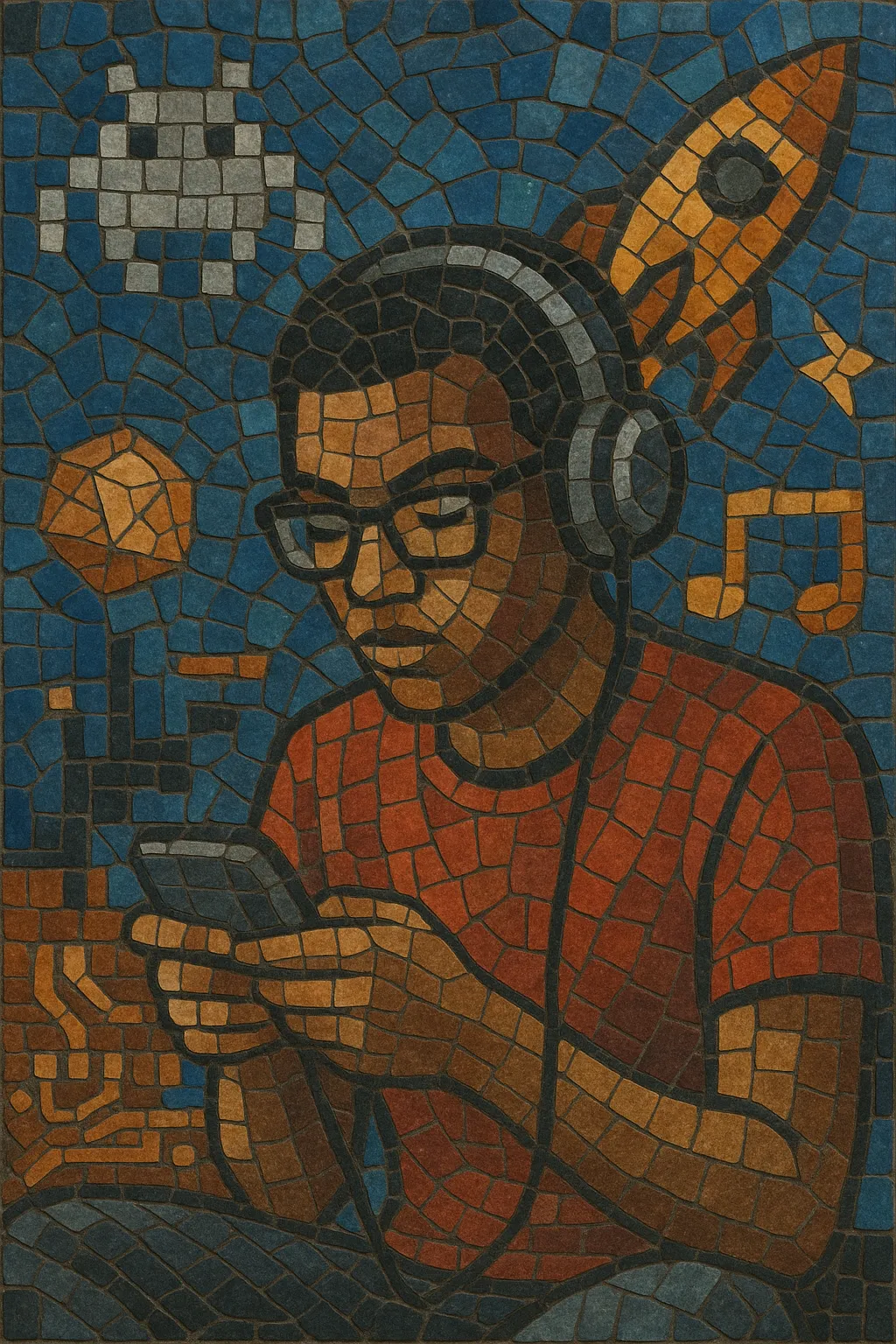Nerdcore is a hip hop microgenre defined by lyrics that celebrate and satirize nerd and geek culture—video games, programming, sci‑fi and fantasy, tabletop and anime fandoms, internet life, and academic or technical in‑jokes.
Musically it ranges from classic boom‑bap to contemporary trap and electro inflections, often folding in 8‑bit/chiptune timbres and samples that evoke retro consoles and PC soundcards. Performances and recordings often embrace a DIY ethos, with home‑studio production, direct fan engagement online, and shows at gaming and comic conventions.
The tone can be humorous and self‑deprecating, but it also includes sincere autobiographical storytelling and community anthems. The scene grew alongside web culture, MP3 blogs, and early social platforms, helping establish a template for internet‑native rap communities.
The term “nerdcore” was popularized by MC Frontalot around 2000, when he framed tongue‑in‑cheek, reference‑dense verses as a proudly nerdy branch of hip hop. Early tracks spread via artist websites, MP3 blogs, and forums, as file‑sharing and Creative Commons culture lowered barriers to entry. Acts like mc chris, MC Lars, YTCracker, Optimus Rhyme, and MC Hawking helped define the sound and tone: witty, self‑aware, and steeped in gaming, coding, and sci‑fi.
As web distribution expanded, nerdcore coalesced into a live scene with performances at tech and gaming events and dedicated festivals. The documentary “Nerdcore Rising” (2008) chronicled the movement’s early touring circuit, while gatherings around conventions (e.g., PAX) brought artists and fans together. Producers increasingly folded in chiptune textures and VGM‑style motifs, connecting the genre to retro computing aesthetics.
The 2010s saw broader visibility through YouTube, Bandcamp, and streaming platforms. Artists such as Mega Ran bridged nerdcore with officially licensed or inspired projects around beloved game franchises, while creators like Dan Bull and Dual Core demonstrated global, internet‑native reach. The sound diversified—some leaned into classic boom‑bap craftsmanship, others into electro‑hip hop and trap—yet the lyrical core remained: clever wordplay about the cultures of code, fandom, and imagination.
Nerdcore helped normalize deeply niche, internet‑centric subject matter in rap, showing that scenes can thrive outside traditional industry pathways. Its template—community‑first, online‑driven, reference‑rich—has informed subsequent waves of fandom‑based rap communities, including anime‑focused rap and gaming‑centric YouTube rap collectives.


